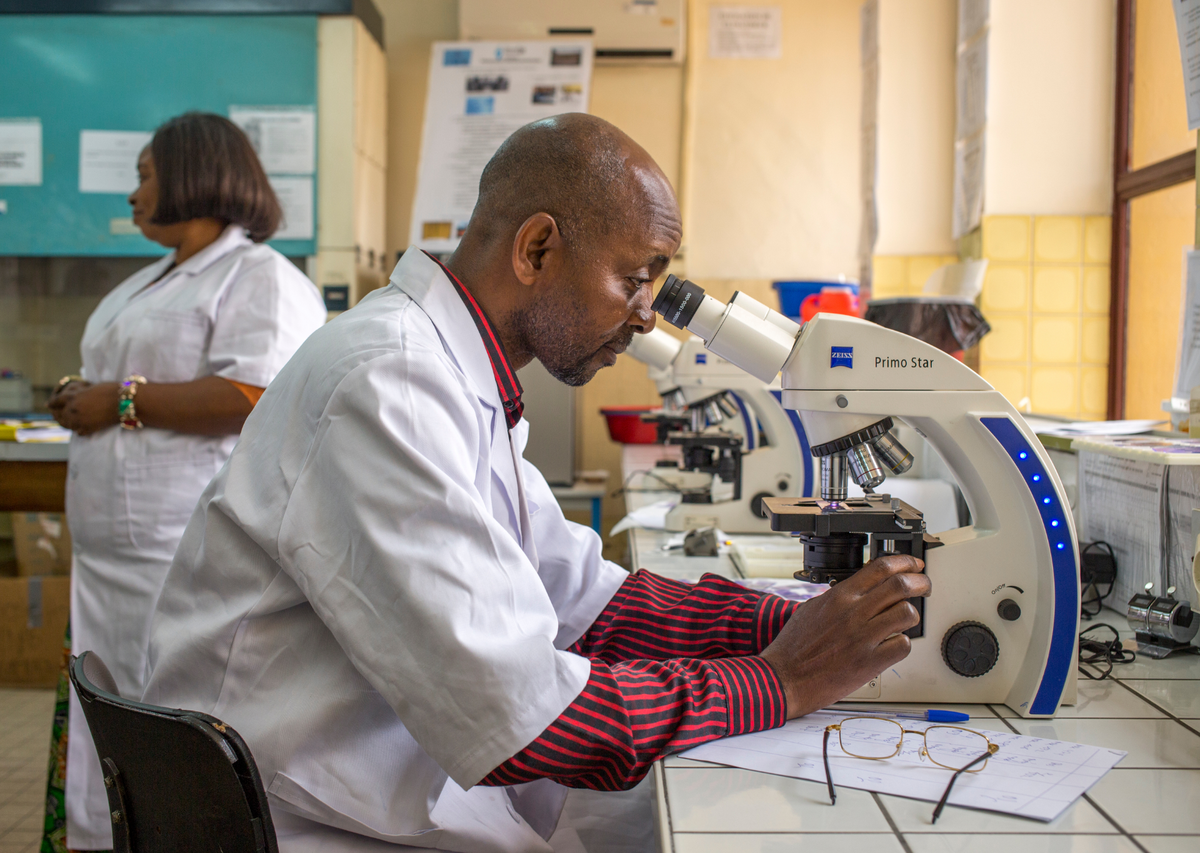
Strengthening vaccine-preventable disease surveillance systems
Supporting governments and partners across Africa to enhance surveillance systems for vaccine-preventable diseases. Through a regional assessment initiative, we evaluated digital readiness, system capacity, and data quality to identify opportunities to strengthen surveillance for better disease detection, reporting, and response.
This project aimed to assess the digital and operational maturity of national vaccine-preventable disease (VPD) surveillance systems using a structured maturity model. The model identifies system strengths and gaps across eight thematic areas, guiding countries toward strategic and sustainable improvements.
Methodology
We conducted a two-tiered assessment process:
Landscape survey: Completed by 23 countries across the WHO African region, using structured digital tools and desk reviews.
Deep dive assessments: Conducted in four countries (Mali, Senegal, Uganda, Zambia) through in-country missions, key informant interviews, focus group discussions, and detailed tool mapping.
More than 100 national stakeholders were engaged through surveys and interviews. All data was synthesized into maturity scores designed to highlight areas for investment, not to compare countries, but to support improvement planning.
Thematic focus areas
The assessment examined system performance across the following domains:
Governance and strategic alignment: Presence of formal governance structures, strategic plans, equity policies, and sustainable funding.
Workforce and technical capacity: Availability of surveillance officers, monitoring staff, SOPs, and maintenance teams.
End-user readiness: Training, satisfaction, and capacity of frontline users.
Infrastructure readiness: Access to computers, mobile devices, reliable connectivity, and maintenance systems.
System lifecycle and localization: Duration and maturity of current systems, multilingual support, and system transitions.
Interoperability: Integration with WHO AFRO systems, national HIS, and use of standards like FHIR and ADX.
Data standards and quality: Indicator alignment, metadata structures, training, and data quality governance.
Data use and reporting: Timeliness and completeness of case-based and aggregate data, data sharing practices, and security compliance.
Key findings
The assessment scores revealed notable variation across countries in their readiness to implement and scale digital solutions for VPD surveillance, with some domains scoring higher than others.
While certain countries demonstrate strong leadership and alignment with national health priorities, many still face gaps in coordination. Workforce and technical capacity remain a limiting factor, with widespread needs for training and institutional support. End-user readiness is mixed, underscoring the importance of equipping frontline workers with the tools and skills to effectively use digital systems. Infrastructure challenges continue to constrain functionality at the point of care. Many countries also lack full ownership of digital platforms or the ability to adapt them to local contexts, which undermines long-term sustainability. Interoperability remains one of the weakest areas, with fragmented systems and minimal data exchange. Finally, while some progress has been made in setting data standards, improving quality, and promoting data use, significant gaps still limit the effectiveness of digital health data for timely decision-making.
Recommendations
To address challenges, the report outlines practical short- and long-term recommendations, including strengthening governance structures, improving infrastructure and workforce development, and building user-centered, interoperable systems. Immediate actions—such as revitalizing coordination mechanisms, delivering targeted training, and mapping existing ICT assets—can generate quick wins. Over time, countries should invest in institutional capacity, develop costed digital health strategies aligned with surveillance priorities, and build resilient, user-centered systems that are adaptable to local contexts. Promoting a stronger culture of data use and aligning efforts across countries and partners will be critical to improving VPD surveillance and driving better health outcomes.
Access the suite of assessment resources below including the full report with deep dive assessments on the four focal countries and briefs for all 23 countries.
Note that the maturity model developed and used for this assessment does not intend to rank countries but rather to identify and contextualize opportunities for strengthening VPD surveillance.
Read the summary of our findings and recommendations across countries.
Access the full qualitative and quantitative insights across countries and the deep dive analysis of Uganda, Mali, Senegal, and Zambia.
Review the briefs from all 23 countries.
The maturity model provides a framework for identifying strengths and gaps in a country’s VPD surveillance system across eight key domains, each with multiple sub-domains. Also included are the questions used during the assessment, mapped back to the indicators.